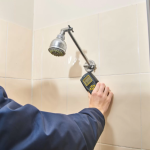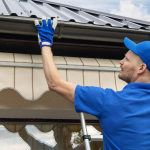Hardwood flooring is a timeless choice that adds warmth, elegance, and lasting value to any home. However, achieving a flawless hardwood floor involves more than just choosing the right wood—it requires careful installation and expert finishing. Whether you’re a homeowner planning a renovation or a builder managing a new project, understanding the process of hardwood laying and finishing is essential.
Choosing the Right Hardwood
Solid vs. Engineered Hardwood
Solid hardwood is made from a single piece of wood and can be sanded and refinished multiple times. Engineered hardwood, composed of a real wood veneer over plywood or fiberboard layers, offers greater stability and moisture resistance—making it suitable for basements or areas with variable humidity.
Wood Species and Durability
Oak, maple, and hickory are popular for their durability and grain patterns. Softer woods like pine offer unique aesthetics but may dent more easily. Consider both the visual appeal and the foot traffic in your home when selecting a species.
Preparing for Installation
Acclimatization
Before installation, hardwood planks should be left in the room for several days to acclimate to the temperature and humidity. This prevents warping and gaps after laying.
Subfloor Conditions
A level, clean, and dry subfloor is critical for a successful installation. Moisture barriers may be required to prevent water damage, especially over concrete or in below-grade areas.
Methods of Laying Hardwood
Nail-Down Installation
This traditional method is commonly used with solid hardwood over plywood subfloors. It provides strong stability but is not suitable for concrete or radiant heat systems.
Glue-Down Installation
Ideal for engineered wood or when installing over concrete, this method uses adhesives to bond the planks to the subfloor. It requires precision to avoid gaps or movement.
Floating Installation
Floating floors are not attached to the subfloor. Instead, planks lock together and “float” over an underlayment. This method is popular for DIY projects and engineered flooring.
In professional installations like those by Plancher Mebesa, attention to detail during the laying phase ensures a seamless fit and long-term durability. These experts consider every variable—subfloor prep, layout direction, and material handling—to achieve high-quality results that stand the test of time.
Finishing Hardwood Floors
Sanding for Smoothness
After laying, floors are sanded to even out the surface and prepare it for finishing. This step requires expertise to avoid gouging or unevenness, especially with softer woods.
Staining for Color
Stains add depth and character to hardwood, enhancing its natural grain. Choose from a variety of tones to match your interior style, from rich darks to light neutrals.
Applying Sealant and Finish Coats
The final step involves sealing the wood and applying one or more finish coats. Finishes can be oil-based, water-based, or polyurethane, each offering different levels of sheen and durability.
- Matte finish: Subtle and modern
- Satin finish: Low sheen with high durability
- Glossy finish: Shiny and reflective, though it shows scratches more easily
Maintenance and Longevity
Cleaning Tips
Use a soft broom or vacuum with a hardwood attachment to keep dust at bay. Damp mop occasionally with a wood floor cleaner—never soak the floor or use harsh chemicals.
Protecting Your Investment
Place felt pads under furniture, use rugs in high-traffic areas, and avoid walking with high heels or cleats on hardwood. Refinish every few years depending on wear.
Conclusion
Hardwood floor installation and finishing is a process that blends craftsmanship with technical know-how. From selecting the right materials to the final coat of finish, every step contributes to the beauty and resilience of your floor. With professional expertise and proper care, your hardwood floor can be a long-lasting and elegant feature in your home.










